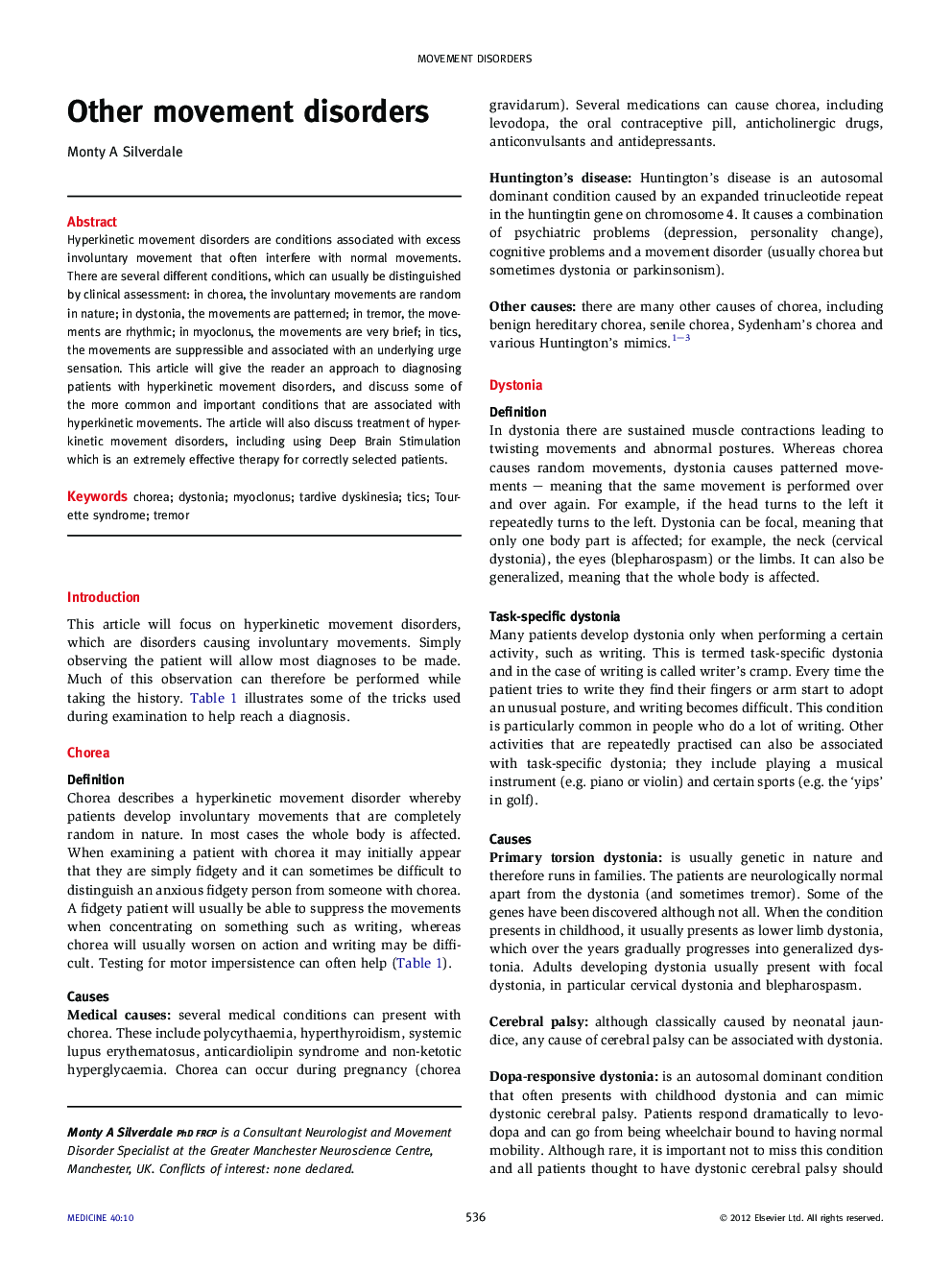| Article ID | Journal | Published Year | Pages | File Type |
|---|---|---|---|---|
| 3804007 | Medicine | 2012 | 4 Pages |
Abstract
Hyperkinetic movement disorders are conditions associated with excess involuntary movement that often interfere with normal movements. There are several different conditions, which can usually be distinguished by clinical assessment: in chorea, the involuntary movements are random in nature; in dystonia, the movements are patterned; in tremor, the movements are rhythmic; in myoclonus, the movements are very brief; in tics, the movements are suppressible and associated with an underlying urge sensation. This article will give the reader an approach to diagnosing patients with hyperkinetic movement disorders, and discuss some of the more common and important conditions that are associated with hyperkinetic movements. The article will also discuss treatment of hyperkinetic movement disorders, including using Deep Brain Stimulation which is an extremely effective therapy for correctly selected patients.
Related Topics
Health Sciences
Medicine and Dentistry
Medicine and Dentistry (General)
Authors
Monty A. Silverdale,
